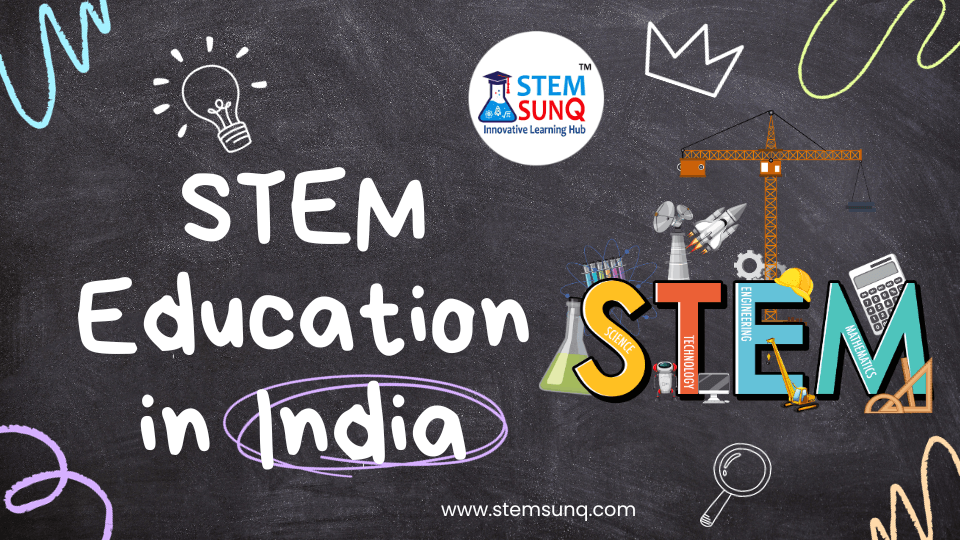
Table of Contents
STEM stands for (Science, Technology, Engineering, and Maths) so before we discuss STEM education in India, let’s first discuss how and when STEM came.
STEM education came about in the early 2000s as a way to bring together science, technology, engineering, and math for students.
STEM education’s evolution was driven by the recognition that these disciplines are interconnected and essential for technological innovation, economic growth, and addressing global challenges in the 21st century.
Although these subjects have been around for a long time, STEM was created to help kids and the young generation learn these important skills in a more connected, engaging, and practical way in this growing tech world.
Let’s discuss why STEM education is important in India.
What is the importance of STEM Education in India?
The reason behind what separates STEM education from other ways is the way of learning from STEM, learning by doing. It is the #1 Reason to adopt stem education in kids and youngsters.
These are the important reasons for STEM education
Cultivating Creativity: STEM develops creativity and innovation. It encourages students to think critically, analyze problems, and bring solutions, empowering them to design, invent, and experiment.
Addressing Societal Challenges: STEM education equips individuals with the tools to tackle pressing societal issues. STEM skills are vital in finding sustainable solutions, from climate change to healthcare disparities.
Preparation for Future Careers: The essence of STEM education lies in preparing students for the future job landscape. Proficiency in STEM subjects opens doors to various career opportunities in technology, engineering, medicine, and beyond.
Also, read 15 exciting stem project-based ideas to explore.
Who benefits from STEM?
Students: Students who receive instruction with a STEM focus are more capable of analytical thought, problem-solving, and adaptation. It encourages curiosity and a deeper understanding of the world around them.
Educational Institutions: Schools that incorporate STEM programs see enhanced learning opportunities and help students develop a culture of research, discovery, and implementation.
Industry and Economy: A skilled STEM workforce promotes innovation, which in turn drives economic expansion. Technological advancements driven by skilled professionals are beneficial to industries.
The Need for STEM Education in India
1. Educational Landscape: Traditional education in India often emphasizes humanities subjects, sidelining STEM. This imbalance hampers the development of critical scientific and technological skills among students.
2. Global Competitiveness: To stay ahead in the global race, India needs a robust STEM workforce. Countries excelling in STEM innovation often lead to technological advancements and economic growth.
3. Job Market Demands: The evolving job market increasingly demands STEM-related skills. Professions like software development, data analysis, and healthcare require a strong foundation in STEM subjects.
How Popular is STEM Learning in India
In recent times, STEM education in India has experienced a significant increase in popularity, gaining traction in a variety of educational contexts.
Both urban and rural schools have embraced STEM-related programs and activities, indicating a growing understanding of the field’s significance. Participation in STEM-focused competitions and specialized programs has increased greatly, showing increased interest from parents and students.
The concentration on innovation and skill development in government initiatives like Skill India and the Atal Innovation Mission has helped to push the popularity of STEM fields further.
Even though this trend points to a promising shift toward a more skill- and practical-focused education, maintaining and growing the popularity of STEM learning in India will still require addressing issues with equitable access, teacher preparation, and infrastructure development.
Conclusion
STEM education in India rising in popularity and reflects a fundamental shift in the focus of education toward real-world, skill-based learning.
Even though government initiatives and their integration into schools show a promising future, it is essential to address issues with infrastructure and accessibility.
All the same, STEM education has the power to shape India’s future through innovation and competitiveness, so long as there is a sustained commitment to providing the next generation to meet the challenges of a changing global landscape.






